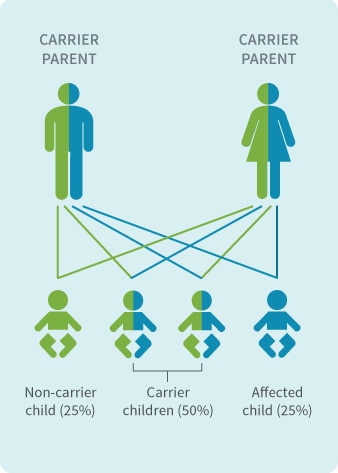Understanding the Types of DNA Testing
Among the different types of DNA tests, how do you choose which one might be right for you? The three most common types of DNA test options are Y-DNA testing, mitochondrial DNA testing (mtDNA testing), and autosomal DNA testing.
Each type of the three DNA testing options look at different parts of your DNA, so you’ll need a basic understanding about how DNA is organized. Mainly, it’s important to know that human DNA mostly comes in long stretches called chromosomes and each person typically has 23 pairs, for a total of 46 chromosomes.
- Y-DNA tests look at one of the chromosomes in the 23rd pair, the Y chromosome.
- Mitochondrial DNA tests (mtDNA tests) consider a tiny snippet of DNA stored in a completely different place in the cell, the mitochondria.
- Autosomal DNA tests measure 22 pairs of chromosomes called the autosomes.

There are specific uses for each type of DNA testing, so taking a closer look at each one can help you compare DNA tests and make an informed decision about which one to choose.
What is Y-DNA Testing?
Y-DNA testing can be used by people with a Y chromosome to research their patrilineal ancestry—their ancestry through their male line. But not everyone has a Y chromosome. Only around half the population, typically biological males, have one. Because of this, Y-DNA testing is only available to around half the population (although someone lacking a Y chromosome can have a family member with a Y chromosome tested).
The Y chromosome is passed directly from a person's biological father, who inherited it from his biological father, and so on. This makes the Y chromosome useful for tracing back your biological father's male line.
- Primary strength: It can trace your biological dad's paternal line far back in time—thousands or even tens of thousands of years ago. This is possible because the Y chromosome is passed down with very few changes, generation after generation.
- Downside: You can only trace the paternal half of your genetic heritage.
What is Mitochondrial DNA Testing?
Mitochondrial DNA testing (mtDNA testing) traces a person's matrilineal (mother's female) ancestry using the DNA in his or her mitochondria. Mitochondria, the powerhouses of the cell, are passed down from your biological mother's egg—your biological father shared none of his mitochondria with you. All of a woman’s biological children inherit her mitochondria, but only her biological female children can pass it along to their daughters. That's why you can only trace your biological mom's female line using mtDNA testing.
- Primary strength: Everyone can take a mitochondrial test to trace a matrilineal line. An mtDNA test also can be used to trace a genetic line back in time thousands or even tens of thousands of years.
- Downside: A mtDNA test can only trace a part of your genetic lineage—the biological women on your maternal line—back in time.
What is Autosomal DNA Testing?
Autosomal DNA testing analyzes most of your DNA that comes from your parents—the 22 pairs of chromosomes that make up your autosomes. The information in these chromosomes can help find recent and distant relatives on both sides of your family, as well as find where your ancestors lived 500 to 1000 or more years ago. Autosomal DNA testing is much more information-rich than either Y-DNA or mtDNA tests since it can reveal more about your ethnicity and who you are related to.
The autosomal AncestryDNA® test evaluates your genetic code at about 700,000 different locations, or markers, across your autosomal chromosomes, focusing on locations that differ between families and ethnic groups. On average, the AncestryDNA® test has an accuracy rate of over 99 percent for reading each marker tested. This information can help you identify which of the more than 2,600 regions across the globe your ancestors may have lived in.
To complement autosomal testing results, AncestryDNA® developed a technology called SideView™. This feature sorts out which parts of your DNA you inherited from each parent. This can help you trace which parent lineages connect you to each of your ethnicities, matches, and communities. This is a huge help for those interested in genetic genealogy.
- Primary strength: An autosomal DNA test gives you the most comprehensive view of your genetic heritage, as it takes into account data from your 22 (out of 23) chromosome pairs.
- Bonus: Test results become even more meaningful when you have a family tree in place. Even a basic tree—you and each of your biological parents—is enough to start. The family tree can help you determine which DNA matches align with each side of your family.
The type of DNA test you choose depends on your particular goals for the DNA results, but if you want the most complete look at your DNA—one that considers both sides of your genetic history, then the autosomal DNA test is the one you’ll want to take.